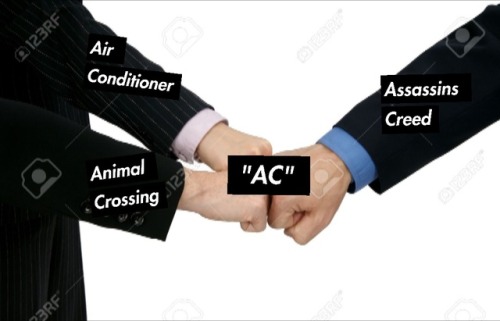This Will Go Amazing With My Bathtub That Is Just Full Of Eyeballs
This will go amazing with my bathtub that is just full of eyeballs
More Posts from Sieveplayer and Others

This was my art school’s water fountain. Drink from them wolf tiddies
oh no
Standard fantasy RPG pantheon, except:
each god is also the patron of one of the setting's local city-states, and each city-state espouses their own version of the pantheon's org chart that positions their patron as King or Queen of the Gods. The gods themselves decline to weigh in on who's correct.
the god of war died in a bizarre trebuchet accident several decades previously; a coalition of other gods have been playing Weekend at Bernie's with their priesthood ever since, doing their best to answer their prayers with variable plausibility and success.
there are two separate gods of knowledge with two separate, non-overlapping cults. Each god's cult is apparently unaware of the other's existence. There's nothing obviously supernatural about this separation; they just never seem to bump into each other.
the supreme god of the Nice Pantheon of Goodness and Light and the supreme god of the Icky Pantheon of Evil and Darkness are clearly the same guy wearing two different hats. Most NPCs react to having this pointed out as though it's obviously absurd.
the obligatory Squiddy Alien Gods From Beyond The Stars are treated as just another branch of the pantheon alongside the usual faux-Greek deities. Nobody thinks it's at all odd that the god of thunder's sworn blood-sibling is a shapeless cloud of blazing eyes.

Selected recurrent patterns or "laws" of evolution, of potential use for speculative biology. List compiled by Neocene's Pavel Volkov, who in turn credits its content to Nikolay Rejmers (original presumably in Russian). These are guidelines, and not necessarily scientifically rigorous.
Dollo's Law, or irreversibility of evolution: organisms do not evolve back into their own ancestors. When mammals returned to the sea, they did not develop gills and dermal scales and change back into fish: they became whales or seals or manatees, who retain mammalian traits and show marks of land-dwelling ancestry.
Roulliet's law, or increase of complexity: both organisms and ecosystems tend to become more complex over time, with subparts that are increasingly differentiated and integrated. This one is dodgier: there are many examples of simplification over time when it is selected for, for example in parasites. At least, over very large time scales, the maximum achievable complexity seems to increase.
Law of unlimited change: there is no point at which a species or system is complete and has finished evolving. Stasis only occurs when there is strong selective pressure in favor of it, and organism can always adapt to chaging conditions if they are not beyond the limits of survival.
Law of pre-adaptation or exaptation: new structures do not appear ex novo. When a new organ or behavior is developed, it is a modification or a re-purposing of something that already existed. Bone tissue probably evolved as reserves of energy before it was suitable to build an internal skeleton from, and feathers most likely evolved for thermal isolation and display before they were refined enough for flight.
Law of increasing variety: diversity at all levels tends to increase over time. While some forms originate from hybridization, most importantly the Eukaryotic cells, generally one ancestor species tends to leave many descendants, if it has any at all.
Law of Severtsov or of Eldredge-Gould or of punctuated equilibrium: while evolution is always slow from the human standpoint, there are moments of relatively rapid change and diversification when some especily fertile innovation appears (e.g. eyes and shells in the Cambrian), or new environments become inhabitable (e.g. continental surface in the Devonian), or disaster clears out space (e.g. at the end of the Permian or Cretaceous), followed by relative stability once all low-hanging fruit has been picked.
Law of environmental conformity: changes in the structure and functions of organisms follow the features or their environment, but the specifics of those changes depend on the structural and developmental constraints of the organisms. Squids and dolphins both have spindle-shaped bodies because physics make it necessary to move quickly through water, but water is broken by the anterior end of the skull in dolphins and by the posterior end of the mantle in squids. Superficial similarity is due to shared environment, deep structural similarity to shared ancestry.
Cope's and Marsh's laws: the most highly specialized members of a group (which often includes the physically largest) tend to go extinct first when conditions change. It is the generalist, least specialized members that usually survive and give rise to the next generations of specialists.
Deperet's law of increasing specialization: once a lineage has started to specialize for a particular niche, lifestyle, or resource, it will keep specializing in the same direction, as any deviation would be outcompeted by the rest. In contrast, their generalist ancestors can survive with a marginal presence in multiple niches.
Osborn's law, or adaptive radiation: as the previous takes place, different lines of descent from a common ancestor become increasingly different in form and specializations.
Shmalhausen's law, or increasing integration: over time, complex systems also tend to become increasingly integrated, with components (e.g. organs of an organism, or species in a symbiotic relationship) being increasingly indispensable to the whole, and increasingly tightly controlled.
I can't believe home depot literally produced a wildly successful science fiction musical and we all just pretend it didn't happen. on one hand yes it had a boring white guy main character but like.... home depot just... Made it? And it had shit ton of box office sales? and no one even talks about this. this is like avatar (2009) all over again





























I have a folder called Time is a Flat Circle in which I collect evidence of humanity. Here is most of them.
I am Mahmoud Helles, the owner of the donation campaign.The campaign aims to expel my family from Gaza and expel my wife to Egypt due to her serious condition with a kidney injury. Please enter my page and then share .https://gofund.me/53fa2830🌹🇵🇸🇵🇸🇵🇸🌹😭
.
I submit to you that the most iconic feature of any animal is either unlikely or impossible to fossilize.
If all we had of wolves were their bones we would never guess that they howl.
If all we had of elephants were fossils with no living related species, we might infer some kind of proboscis but we’d never come up with those ears.
If all we had of chickens were bones, we wouldn’t know about their combs and wattles, or that roosters crow.
We wouldn’t know that lions have manes, or that zebras have stripes, or that peacocks have trains, that howler monkeys yell, that cats purr, that deer shed the velvet from their antlers, that caterpillars become butterflies, that spiders make webs, that chickadees say their name, that Canada geese are assholes, that orangutans are ginger, that dolphins echolocate, or that squid even existed.
My point here is that we don’t know anything about dinosaurs. If we saw one we would not recognize it. As my evidence I submit the above, along with the fact that it took us two centuries to realize they’d been all around us the whole time.
-
 bashful-author liked this · 1 month ago
bashful-author liked this · 1 month ago -
 xanams liked this · 1 month ago
xanams liked this · 1 month ago -
 xyl3m liked this · 2 months ago
xyl3m liked this · 2 months ago -
 ashe-wottlin reblogged this · 2 months ago
ashe-wottlin reblogged this · 2 months ago -
 angohsix reblogged this · 3 months ago
angohsix reblogged this · 3 months ago -
 maimoncat liked this · 3 months ago
maimoncat liked this · 3 months ago -
 bringerofmolk reblogged this · 3 months ago
bringerofmolk reblogged this · 3 months ago -
 lillyorlyracat liked this · 3 months ago
lillyorlyracat liked this · 3 months ago -
 kitxi-official reblogged this · 3 months ago
kitxi-official reblogged this · 3 months ago -
 hul-ur liked this · 3 months ago
hul-ur liked this · 3 months ago -
 sniperbrucedog liked this · 3 months ago
sniperbrucedog liked this · 3 months ago -
 barrelofbees liked this · 3 months ago
barrelofbees liked this · 3 months ago -
 exactlyjoyfulduck liked this · 3 months ago
exactlyjoyfulduck liked this · 3 months ago -
 neurodivergentnecessity liked this · 3 months ago
neurodivergentnecessity liked this · 3 months ago -
 j-poorid liked this · 3 months ago
j-poorid liked this · 3 months ago -
 beecha reblogged this · 3 months ago
beecha reblogged this · 3 months ago -
 borealhauntings liked this · 3 months ago
borealhauntings liked this · 3 months ago -
 brilliantdisguises reblogged this · 4 months ago
brilliantdisguises reblogged this · 4 months ago -
 unluckyxse7en reblogged this · 4 months ago
unluckyxse7en reblogged this · 4 months ago -
 faniin liked this · 4 months ago
faniin liked this · 4 months ago -
 thedisplaycase reblogged this · 4 months ago
thedisplaycase reblogged this · 4 months ago -
 candysweetie28 liked this · 4 months ago
candysweetie28 liked this · 4 months ago -
 nochnye-vedmy reblogged this · 4 months ago
nochnye-vedmy reblogged this · 4 months ago -
 patheticpat reblogged this · 4 months ago
patheticpat reblogged this · 4 months ago -
 potatoqueensays reblogged this · 4 months ago
potatoqueensays reblogged this · 4 months ago -
 potatoqueensays liked this · 4 months ago
potatoqueensays liked this · 4 months ago -
 kvethashurtugal liked this · 4 months ago
kvethashurtugal liked this · 4 months ago -
 ellieloves2read reblogged this · 4 months ago
ellieloves2read reblogged this · 4 months ago -
 twink-between-worlds reblogged this · 4 months ago
twink-between-worlds reblogged this · 4 months ago -
 dragon-mantis reblogged this · 4 months ago
dragon-mantis reblogged this · 4 months ago -
 dragon-mantis liked this · 4 months ago
dragon-mantis liked this · 4 months ago -
 teeth-investigations-ltd reblogged this · 4 months ago
teeth-investigations-ltd reblogged this · 4 months ago -
 obieros reblogged this · 4 months ago
obieros reblogged this · 4 months ago -
 mysticmikey223 liked this · 5 months ago
mysticmikey223 liked this · 5 months ago -
 urlocalsewerclown liked this · 5 months ago
urlocalsewerclown liked this · 5 months ago -
 dyandragon liked this · 5 months ago
dyandragon liked this · 5 months ago -
 nappybl00k reblogged this · 5 months ago
nappybl00k reblogged this · 5 months ago -
 nappybl00k liked this · 5 months ago
nappybl00k liked this · 5 months ago -
 samforgoragain liked this · 5 months ago
samforgoragain liked this · 5 months ago -
 xxsomedudexx liked this · 5 months ago
xxsomedudexx liked this · 5 months ago -
 too-short-for-my-own-good reblogged this · 5 months ago
too-short-for-my-own-good reblogged this · 5 months ago -
 cant-apult reblogged this · 5 months ago
cant-apult reblogged this · 5 months ago -
 goldetrash liked this · 5 months ago
goldetrash liked this · 5 months ago -
 b0ltz reblogged this · 5 months ago
b0ltz reblogged this · 5 months ago -
 b0ltz liked this · 5 months ago
b0ltz liked this · 5 months ago -
 literallyjustvibin23 liked this · 5 months ago
literallyjustvibin23 liked this · 5 months ago -
 funchilling reblogged this · 5 months ago
funchilling reblogged this · 5 months ago -
 something-else3 liked this · 5 months ago
something-else3 liked this · 5 months ago -
 sand-enthusiast reblogged this · 5 months ago
sand-enthusiast reblogged this · 5 months ago -
 office-horror reblogged this · 5 months ago
office-horror reblogged this · 5 months ago
